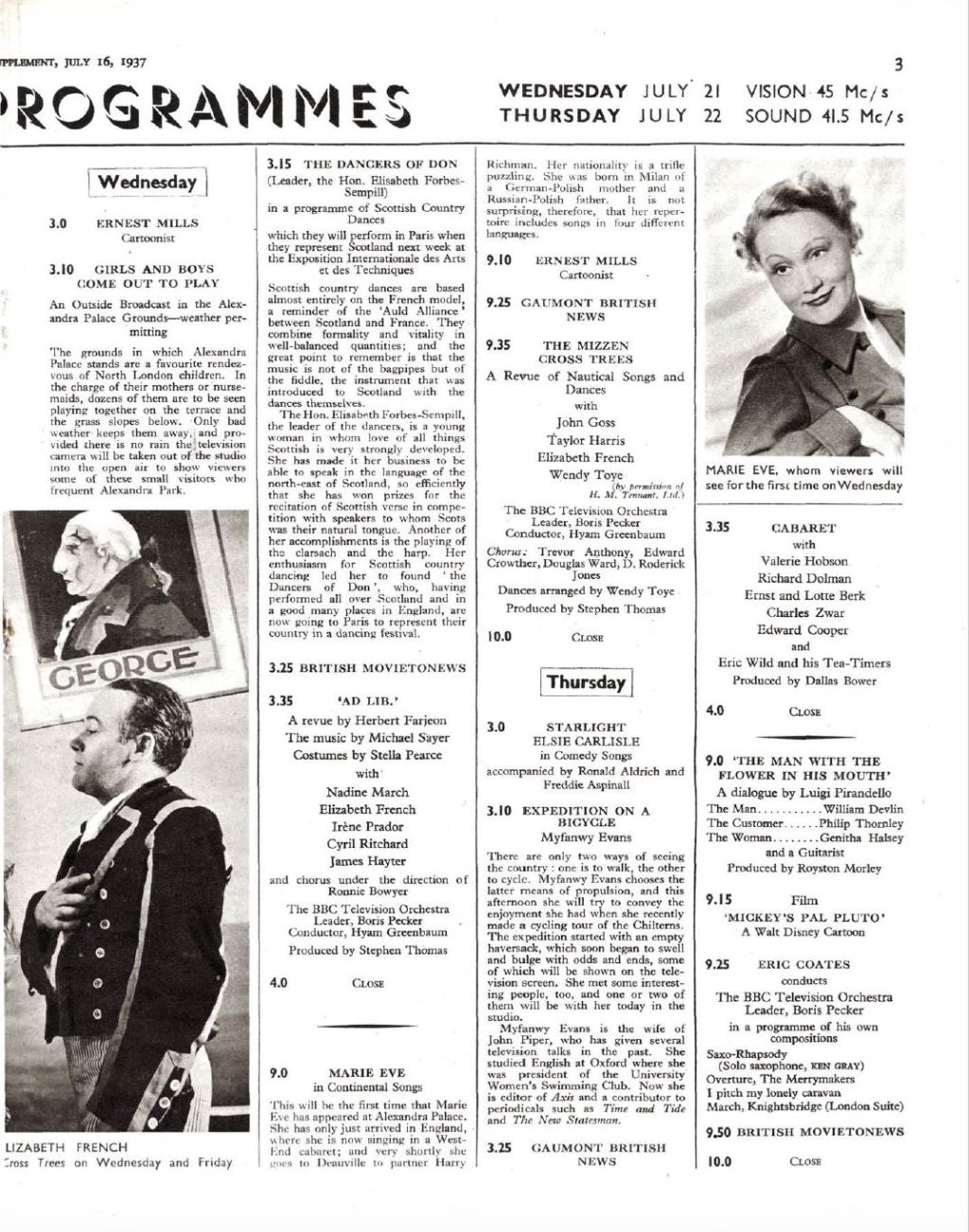OTD in early British television: 21 July 1937

John Wyver writes: Wednesday 21 July 1937 fell in the middle of the last week when the Radio Times Television Supplement was published in the London edition of the listings magazine. At the centre of three pages of detailed programme details was the schedule (below) that promised cartoonist Ernest Mills, a ‘local OB’ of children playing in Alexandra Park (which would be cancelled because of rain), The Dancers of Don, a newsreel, a revue titled Ad Lib, and in the evening singer Marie Eve, and a nautical revue that would become a regular favourite, The Mizzen Cross Trees.

The Supplement had started in January, and this was the twenty-eighth edition. It began as a confident sixteen page insert, with features, full-page photographs and television-specific advertising. But as the number of domestic set owners remained stubbornly below one thousand, the initiative shrank until by this week it was just four pages, no advertising, and only a front page of trails for forthcoming attractions and reflections on the medium (above).
‘News for Televiewers’ nonetheless contained much fascinating copy, especially since at this point the mainstream newspapers rarely noticed the new medium and there were no regular critics. In this edition of the Supplement, for example, there is a detailed discussion of the challenging work of the studio camera operators, including the following paragraphs:
Each camera has a view-finder of ground glass, about 4 inches by 5 inches, which gives an inverted image. Here then is one difficulty: the camera-man sees everything upside-down, chorus girls standing on their heads and tapping their feet on the ceiling, prima donnas looking like circus acrobats.
Obviously, the first requisite of a camera-man is a cool head. Three things often concern him all at once—focussing, panning, and composition. The focussing is manipulated by a control knob on either side of the viewfinder and the difficulty of doing this successfully in a Fred Astaire-Ginger Rogers type of dance scene can be imagined.
As for composition, this is an important artistic consideration, in which the skilled photographer shows to advantage. The lighting tends to make things even more harassing: the illumination from the 5 kilowatt lamps occasionally makes the image on the viewfinder rather indistinct.
At the end of this week the service from AP shut down for three weeks (for more on which, see a forthcoming post), and when it returned in August television was relegated to a single page in Radio Times, with only minimal details and, for a while, no accompanying features. Not until well after the forthcoming war would Radio Times devote as much space to the emerging form as it did during the first months of 1937.
[OTD post no. 216; part of a long-running series leading up to the publication of my book Magic Rays of Light: The Early Years of Television in Britain in January 2026.]
Leave a Reply